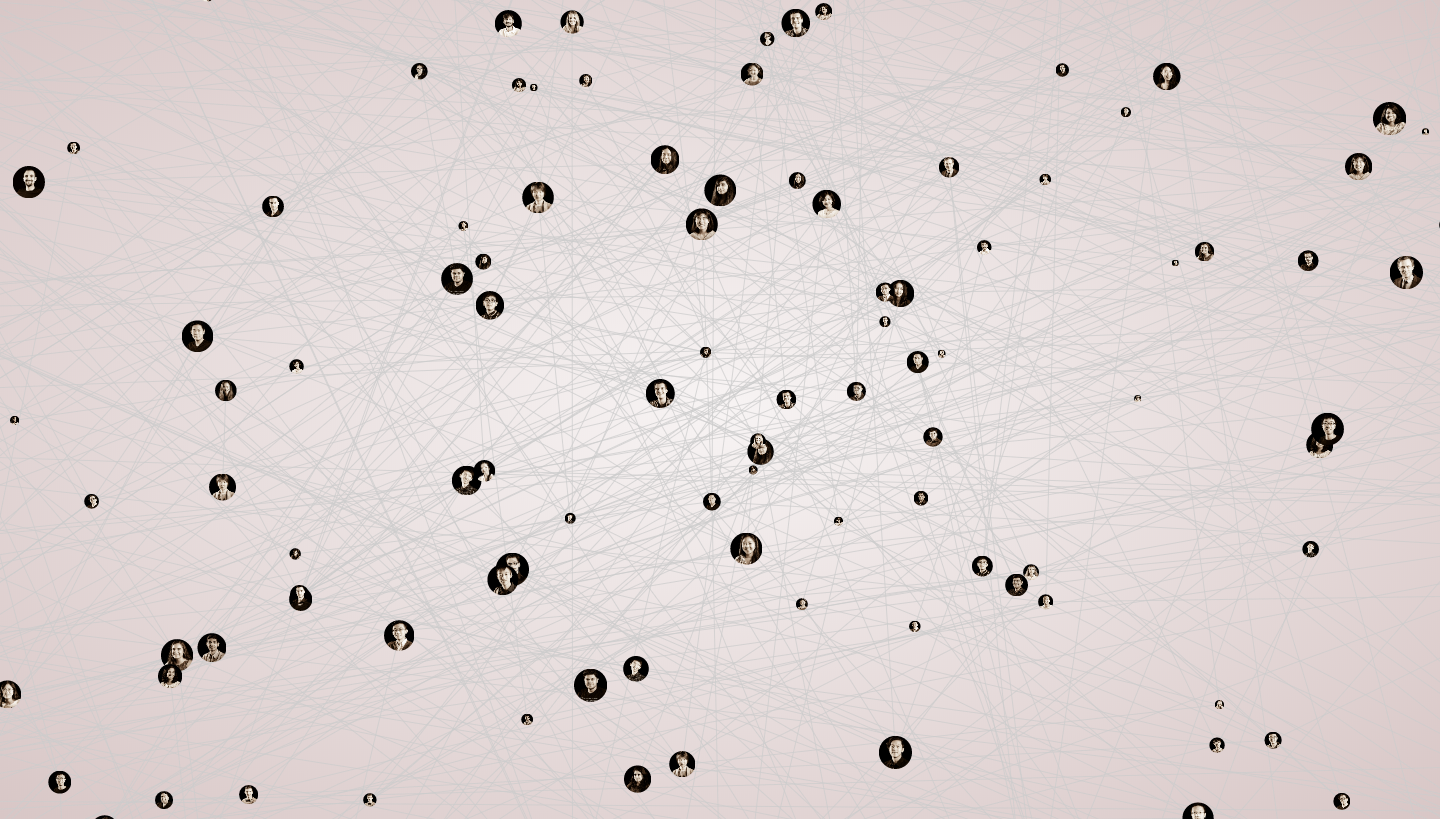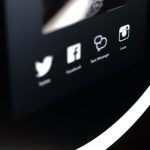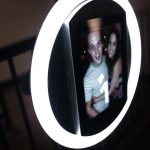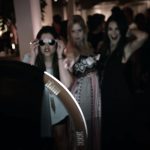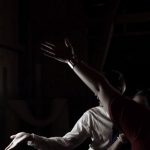The Work This Week:
This week was spent preparing for halves presentations. We also had our third client meeting on Monday, and also got the chance to run our first playtests as well.
Client Meeting:
We presented the work we’ve done over the past several weeks to our client, represented by Beth Wiser and Brian James, along with Associate Vice President Sophie Elias. We got very productive feedback for where to go going forward.
Firstly, in our presentation, we talked about using high-quality cameras along with the tablet display, and our client advised us that it’s not necessarily critical to have high-quality photos and that we should use the iPad (along with the stand) so that we only have to interact with one device.
This also will help going forward with regards to the fact that we have two different experiences going simultaneously in our current design: (1) the input experience, and (2) the visual interaction with the data. Our client advised us to look for ways to combine them together, and having only one input device is a step in that direction.
It was also suggested that we try to display our visuals on just one wall instead of two. This is partly so that there is room for other material in the space, but this will also help with (a) synthesizing the experience, and (b) allowing us to move the display to the side wall, which has dimmer lighting that is more likely to work with projections.
We also talked about curating the questions for the visitors and how to work in the different kinds of audiences who will be using our installation. Firstly, our client suggested that our third question (after “where are you from?” and “what are you interested in?”) be something social and something related to fun, extracurricular life at CMU and Pittsburgh.
Then, we discussed about whether or not to have a Starting Question based on who is interacting? Is it a prospective student, a current student, an alumnus, or another kind of guest. With regards to alumni, we want to be able to see the famous, successful alumni that allows students to imagine what they can see. From there, we wondered if it’s ok to have the names of these alumni as part of the exhibit, even though for students and other guests, we want to allow them to be anonymous. This will be a big question moving forward, especially because we will be looking to pre-populate the database with alumni. What kind of permission do we need to have to do this? Capturing this information can be discussed through the alumni network.
Lastly, it was suggested to bring the ability of choosing different CMU backdrops back into the exhibit to enhance the visual experience. Ideas for this might be to allow visitors digitally to choose a background after they take their selfie. We were informed about the technology of SimpleBooth to look into for ideas on this:
From here, we developed a new floorplan on how to use our space:
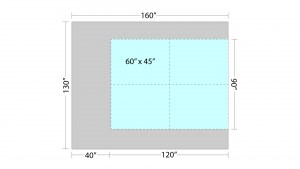
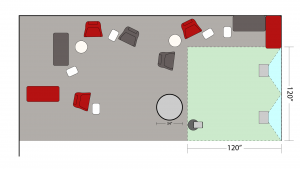
Additionally, we created a new mockup of what our installation may look like:
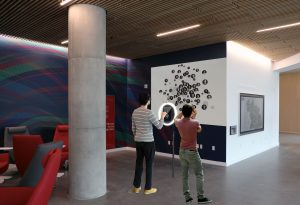
Playtesting and Meeting with Jess Hammer:
We playtested our wireframe (below) on a tablet with several students during the week, testing to make sure that the user flow is followable and understandable, which it was.
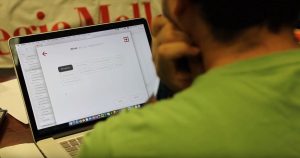
General feedback from playtesters was that:
- It was straightforward.
- Most of them read the “inappropriate” warning
- Few would read the terms & conditions.
- Seeing a map of where everyone was from was cool
- One playtester said that it “took the right parts of other apps that I knew + I knew how to go about it.”
- They said they’d move closer to the wall when prompted to.
With regards to questions, playtesters said that anonymity, seeing famous alumni, answering social questions all would work for them, and that they’d be interested in seeing the mosaic grow into a CMU symbol. They also advised that we keep our questions specific (i.e. we should ask “What discipline are you interested in?” rather than “What are you interested in?”) and impersonal so that they wouldn’t feel uncomfortable with regards to privacy.
At the end of the week, we met with Jess Hammer to discuss playtesting, as well as the question of our experience feeling like two experiences in one. With the former, she suggested that testing wireframes and prototypes is fine for now, but that going forward we should try to test with groups as close to our target audience as possible. CMU first year students (who have fresh memories of their college tour experience) and prospective students coming to the ETC would be her suggestions.
With the latter question, we discussed adding transitions between the tablet experience and the display experience (i.e. arrow comes up and points to the wall after you take the picture) to guide the guest’s eye and make this seamless. We could also think about lighting with regards to guiding the guest (i.e. a part of the display could turn on after the guest is done with the tablet). Going forward, she said to monitor the use of Kinect closely, because it could get messy with one guest at the kiosk, one at the wall, or with group usage. Our exhibit must work for the most complicated case.
Halves Presentation Preparation:
In terms of design, we completed our backend prototype, making sure that the algorithm to sort and store photos into categories worked.
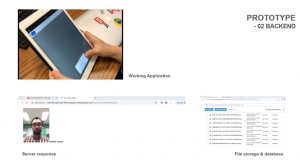
We also continued our work on the visualization of our frontend experience and the nodal animation that goes with it.
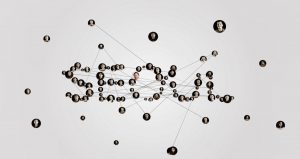
Both of these designs are key components of our halves presentation, which will be held Monday of next week.
Going Forward:
In addition to presenting at halves and getting feedback on our current iteration, we will begin playtesting more and also begin combining our frontend and backend experiences together. Iteration will be key moving forward.
